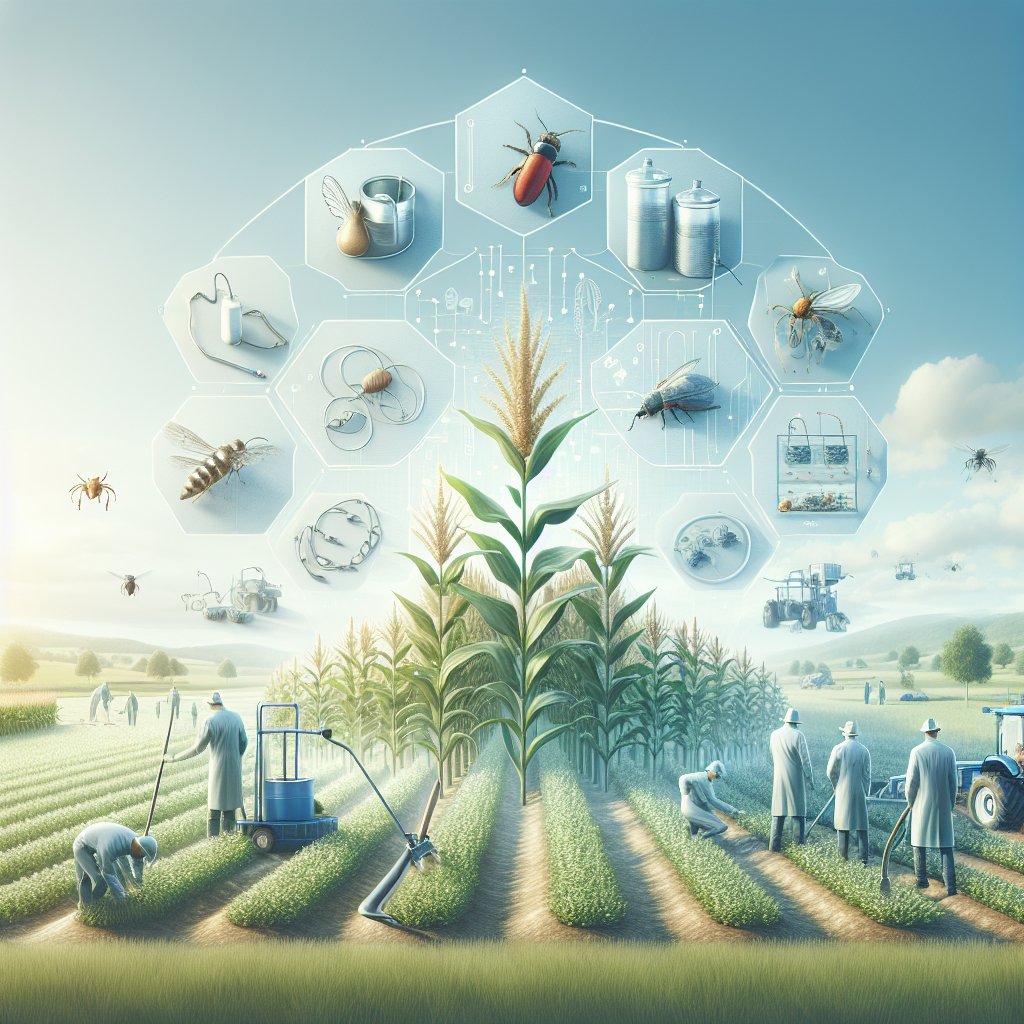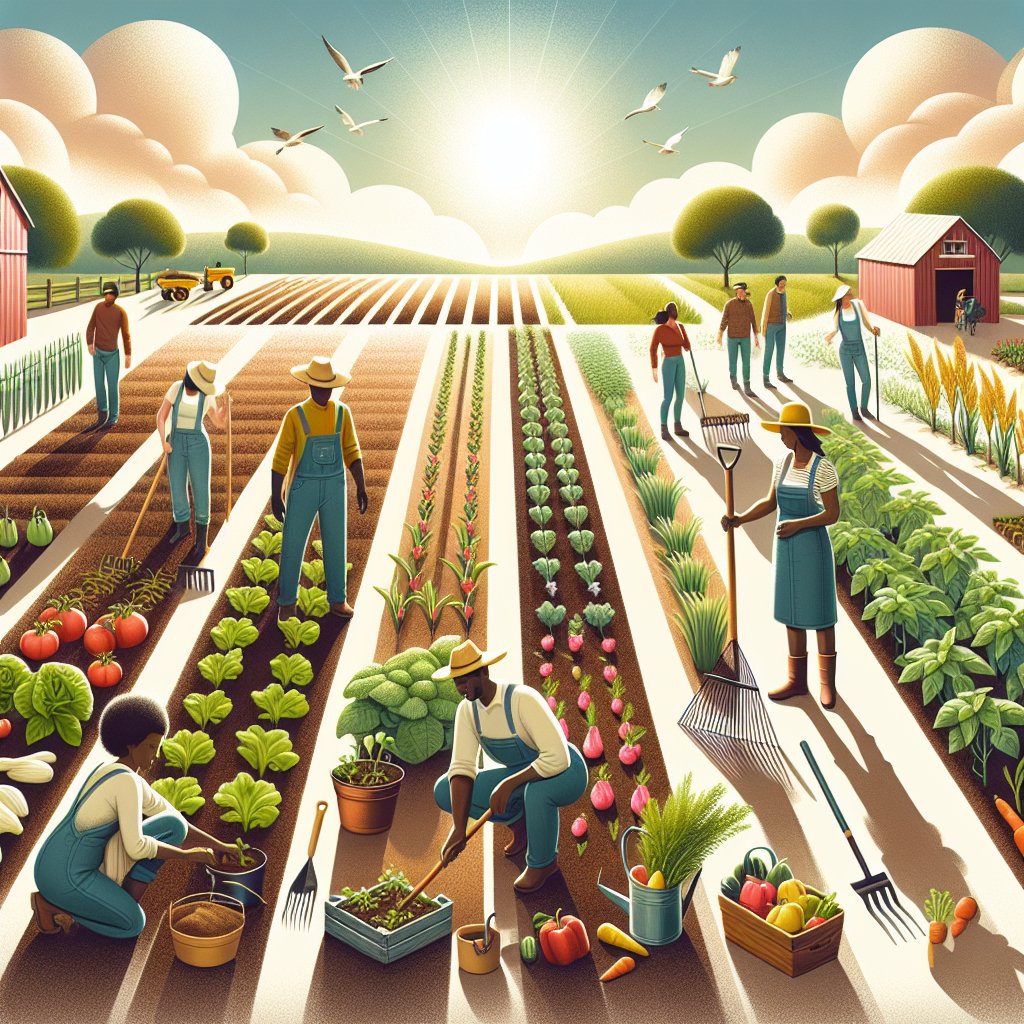
Effective pest management is crucial for maintaining healthy crops and ensuring high yields. Farmers and agricultural professionals must employ a variety of strategies to prevent and manage crop pests, which can cause significant damage if left unchecked. This article explores several methods and techniques that can be used to protect crops from pests, focusing on both prevention and management strategies.
Understanding Crop Pests and Their Impact
Crop pests are organisms that cause damage to crops, reducing their quality and yield. These pests can include insects, weeds, fungi, bacteria, and viruses. Understanding the types of pests that affect specific crops is essential for developing effective management strategies. The impact of pests on agriculture can be devastating, leading to economic losses and food insecurity. Therefore, it is vital to identify and address pest issues promptly.
Types of Crop Pests
There are several types of crop pests, each with unique characteristics and effects on crops. Insects, such as aphids, caterpillars, and beetles, are among the most common pests. They can feed on plant tissues, transmit diseases, and cause significant damage. Weeds compete with crops for nutrients, water, and sunlight, often leading to reduced yields. Fungal infections, such as powdery mildew and rust, can weaken plants and reduce their productivity. Bacterial and viral infections can also spread rapidly, causing widespread damage.
Economic and Environmental Impact
The economic impact of crop pests is substantial, with billions of dollars lost annually due to reduced yields and increased management costs. Pests can also lead to environmental issues, as the use of chemical pesticides can harm non-target organisms and lead to resistance. Sustainable pest management practices are essential to minimize these impacts and ensure long-term agricultural productivity.
Preventive Measures for Crop Pest Management
Prevention is the first line of defense against crop pests. By implementing preventive measures, farmers can reduce the likelihood of pest infestations and minimize the need for reactive management strategies. Several techniques can be employed to prevent pests from affecting crops.
Cultural Practices
Cultural practices involve modifying farming techniques to create an environment that is less conducive to pest infestations. Crop rotation, for example, can disrupt the life cycles of pests by changing the types of crops grown in a particular area. This practice can reduce the buildup of pest populations and prevent them from becoming established. Additionally, maintaining proper sanitation by removing plant debris and weeds can eliminate potential breeding grounds for pests.
Biological Control
Biological control involves using natural predators or parasites to manage pest populations. This method can be highly effective and environmentally friendly, as it reduces the need for chemical pesticides. For instance, introducing ladybugs to control aphid populations or using parasitic wasps to target caterpillars can help maintain a balanced ecosystem. Encouraging biodiversity by planting a variety of crops and maintaining natural habitats can also support beneficial organisms.
Resistant Varieties
Planting pest-resistant crop varieties is another effective preventive measure. These varieties have been bred to withstand specific pests, reducing the need for chemical interventions. By selecting resistant varieties, farmers can protect their crops from common pests and improve overall yield and quality.
Managing Crop Pests: Reactive Strategies
Despite preventive measures, pest infestations can still occur. When this happens, it is essential to implement effective management strategies to minimize damage and control pest populations. Reactive strategies can include chemical, mechanical, and integrated pest management approaches.
Chemical Control
Chemical control involves the use of pesticides to manage pest populations. While effective, this method should be used judiciously to minimize environmental impact and prevent the development of resistance. Farmers should select pesticides that target specific pests and apply them according to recommended guidelines. It is also important to rotate chemical classes to prevent resistance buildup.
Mechanical Control
Mechanical control methods involve physical removal or destruction of pests. Techniques such as handpicking, trapping, and using barriers can be effective for managing certain pest populations. For example, installing insect nets or row covers can protect crops from flying insects, while traps can capture and reduce pest numbers.
Integrated Pest Management (IPM)
Integrated Pest Management (IPM) is a holistic approach that combines multiple strategies to manage pests effectively. IPM emphasizes the use of preventive measures, monitoring, and targeted interventions to minimize pest impact. By integrating cultural, biological, mechanical, and chemical control methods, IPM aims to achieve sustainable pest management with minimal environmental impact.
Conclusion
Preventing and managing crop pests is essential for ensuring agricultural productivity and sustainability. By understanding the types of pests and their impact, farmers can implement effective preventive measures and reactive strategies. Employing a combination of cultural practices, biological control, resistant varieties, and integrated pest management can help protect crops and maintain healthy yields. As the agricultural landscape continues to evolve, adopting innovative and sustainable pest management practices will be crucial for meeting the challenges of the future.

